Mood boards are a wonderful tool to get un-stuck, to get organized, to get inspired. Rather than wandering aimlessly in a sea of ideas, you can use a mood board to tighten your vision for a new project and refine the aesthetic.
Keep track of inspiration & organize ideas
Mood boards are a brilliant “catch-all” for creative ideas and the visual inspiration you come across in your daily life. Have you ever wished you had saved that photo you saw on a blog post because it perfectly captured the feeling you wanted for your next photo shoot, but now you can’t find it? Maybe you came across an unlikely color combination on your way home and wished you’d recorded it somewhere?
All of these visuals can be saved on a mood board so that you can reference them later in your creative work. Getting in the habit of collecting visual inspiration is one way to grow as an artist.
Rachel Lundstrom dyes yarn in Lakewood, Colorado for her business, Six and Seven Fiber, and uses mood boards to organize her visual ideas. “It’s motivating to find photos from nature and other creative artists that I can then focus into a new creative work myself,” says Lundstrom.
Here are some examples of Lundstrom’s mood boards:
Texture

Color schemes
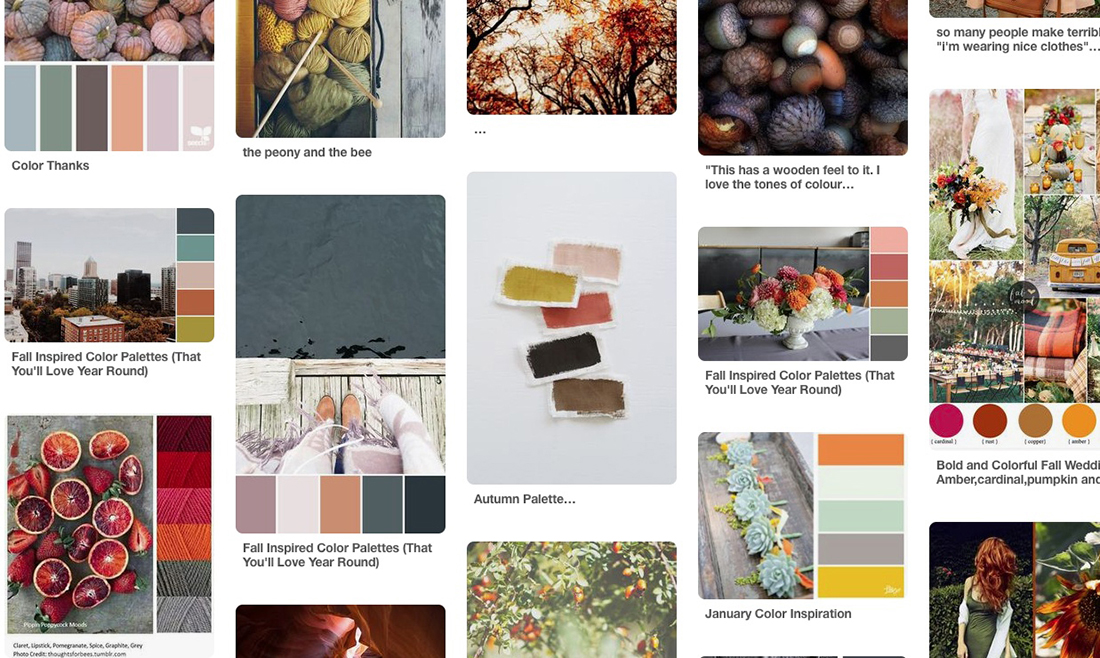
Mood
Mood boards can serve as motivation when you feel yourself falling into a creative slump. “They’re an energized little space where I can dream and push myself out of comfort zones,” Lundstrom says.
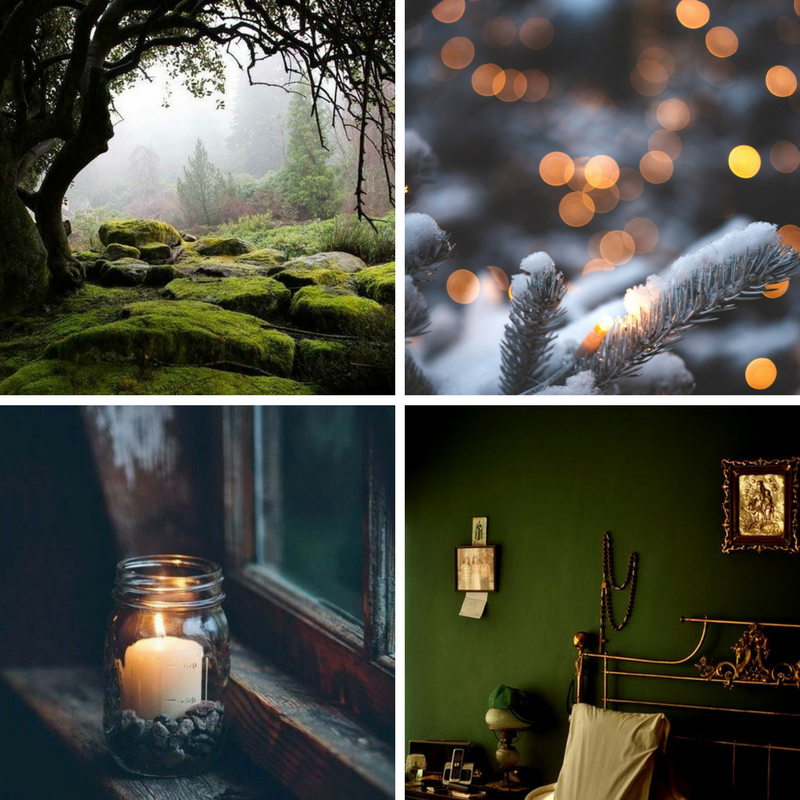

Spring collection mood board and fabrics.
Photo courtesy of Hanna Lisa Haferkamp
Plan collections
A second way to use mood boards is to help you to unify a new a new body of work. Before you set about designing a collection of fabrics, a new set of project bags, or a knitting pattern, create a mood board that expresses the style and color story you’d like to express.
I love to start a new mood board whenever I work on a new collection. I usually begin with one picture that really speaks to me as a starting point and then browse Pinterest, Unsplash, and blogs to add pictures to the mood board. Over time, a feeling, color scheme, and aesthetic for the next collection emerges. Later, when I’m picking out fabrics for my project, I always go back to my mood board to check if the colors and textures are in line with the overall aesthetic I planned for my new collection.
Polymer clay artist Amanda Anson of Little Bitty Delights also uses mood boards to plan out new designs. Anson creates food-shaped stitch markers and other accessories for knitters. “When I’m working on a new stitch marker collection for the shop, I start by dumping all my ideas into my mood board,” she says. “Since most of my markers are inspired by real food, I’ve named the board ‘sweets.’ From there I have things broken down into categories, like seasons. Currently I’m working on spring.”
“I like to go one more step and select about nine photos from all my inspiration and put them into a collage photo to save as a quick one-shot reference of what I want to work on,” says Anson.
Don’t be afraid to add images of objects that are seemingly unrelated to your product line. The shape of a bottle, a landscape, or an element from nature can express an idea that you want to capture in your collection.
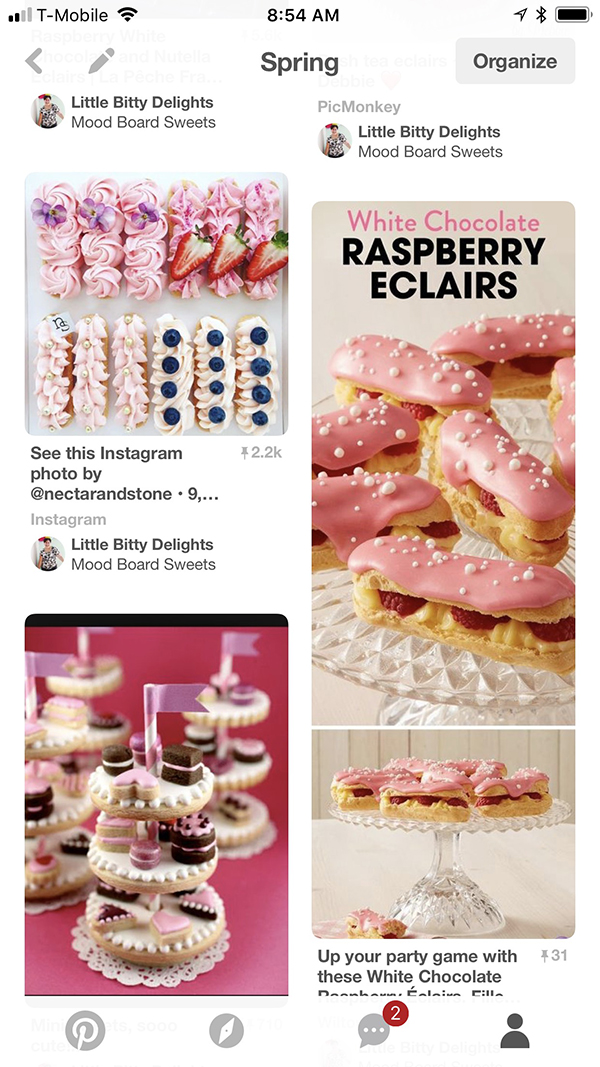

Coordinate collaborations with other makers
Collaborations are one of my great joys in running a creative business. It’s magical what a few different artists and makers can achieve together! I’ve found that having a mood board for each project is a helpful for ensuring a unified aesthetic. It acts as a visual reference point to convey and align the vision between everyone involved. Often, it’s easier to just share a few pictures that represent similar colors, shapes, and textures rather than to try to describe them with words.
If you’re a service provider working with a client, use a mood board to pitch a concept and sell your client on the idea you’ve created and reduce the risk that the final product doesn’t meet their expectations.
For my next collaboration with the Canadian-based yarn company Fleece & Harmony I’ve shared a screenshot of my Pinterest mood board with Jennifer, the owner of Fleece & Harmony, and she in turn created a colorway based on the photos in the mood board.
If you’re inspired by a particular era in history, find images or actual objects from that era to add to your mood board. Fonts, color palettes, and design elements from history can be a terrific form of fresh inspiration today.
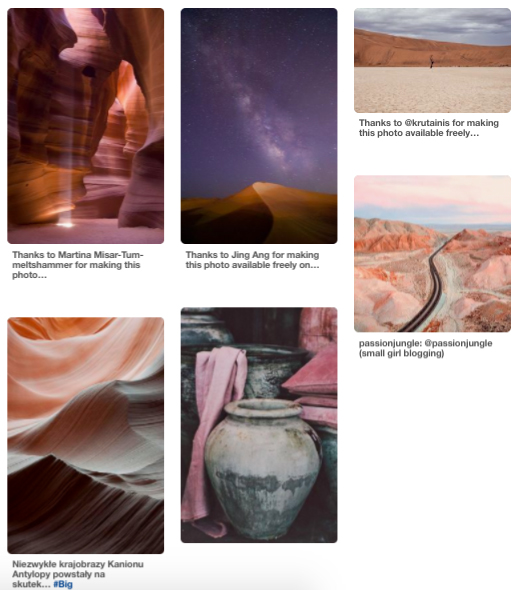
Here are some ideas for creating a mood board:
Physical mood boards
- Cork pinboard or magnetic whiteboard to create your board – ideally within sight of your workspace. In a pinch, a wall or the back of a door will also do!
- Washi tape, pins, or magnets to stick photos and papers to the board
- Post-it notes to add little notes
- A pen or string to draw connections between different things on the board
Virtual mood boards
- Pinterest: My go-to platform for creating virtual mood boards. It’s free, boards are easy to create, and you can find tons of inspiration on the platform itself!
- Canva: Great to generate a collage of different photos or visuals to share with other makers. The boards look a bit more polished than a simple Pinterest screenshot.
- Coolors: A great little website that allows you to pull color schemes from photos or collages – amazing to translate a screenshot of your mood board into HEX codes!
Add any of these elements:
- Color swatches
- Photos
- Sketches
- Words
- Examples of fonts
- Bits of texture
- Pattern samples
- Found objects
Now it’s your turn. I hope you’ve gotten a few ideas about how mood boards can help your creative work – they’re a wonderful tool, no matter whether you want to use them to purely keep track of what inspires you or whether you want to approach them in a more structured way to help inform your creative process.

Hanna Lisa Haferkamp
contributor
Hanna Lisa is a coach for creative business owners, project bag designer and co-founder of the independent knitwear publisher making stories. She loves knitting, writing, and working with other female creatives on making this world a better place. If you’re curious, you can find out more about her on her website, Etsy, and Instagram.

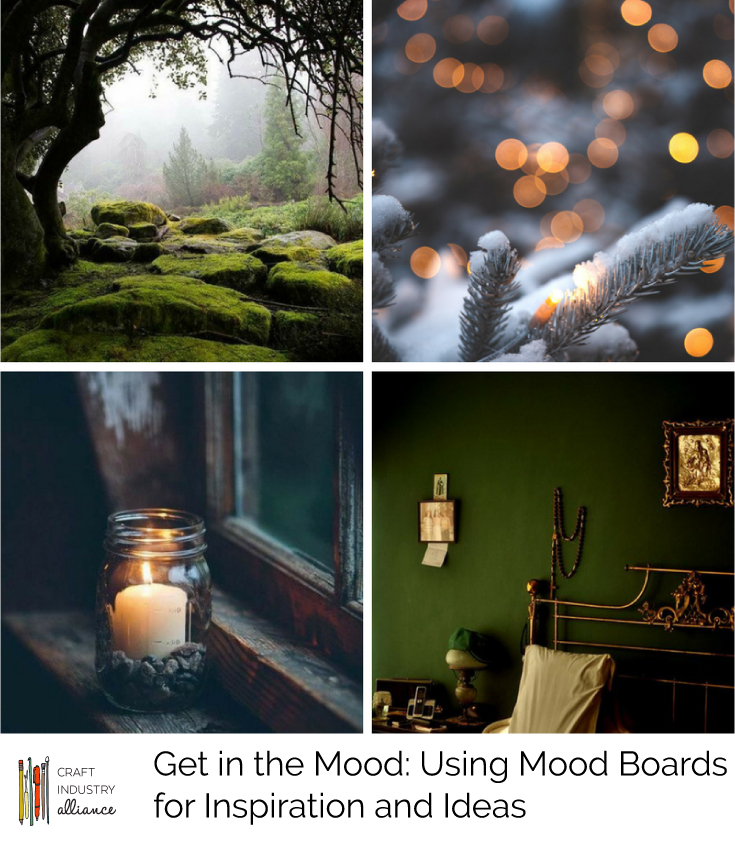
Great article Hanna, I have lots of ideas saved on Pinterest boards but I now find I’m using Instagram for that now you can create boards with images you save on there. So much inspiration!